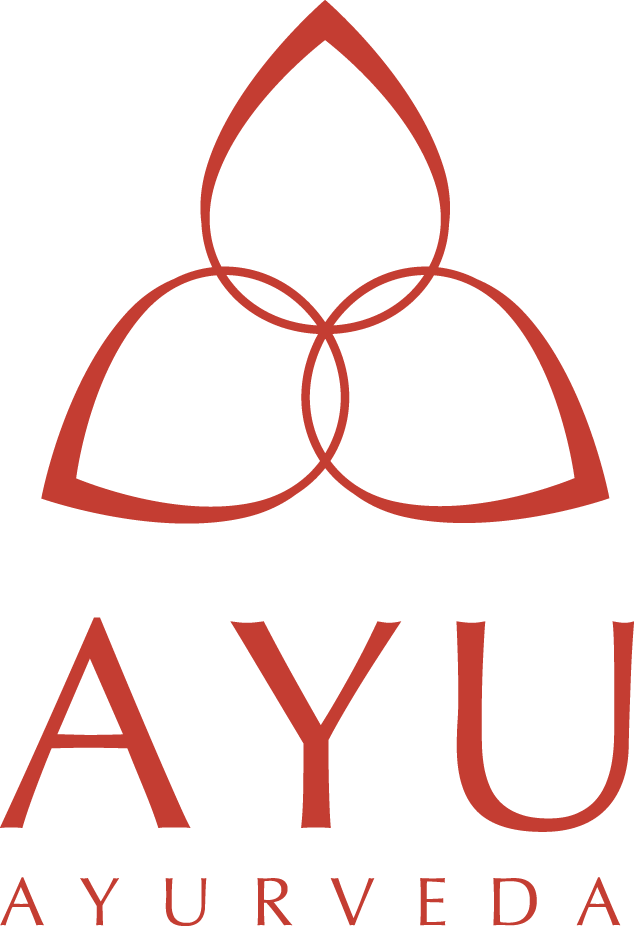THE ABHYANGA RITUAL
The Ritual of Self Massage
Abhyanga is the Ayurvedic term for lovingly oiling the body.
Practicing abhyanga regularly provides a profound feeling of stability, strength and well-being. This is in such a literal sense that the Sanskrit word ‘sneha’ translates to “oil” and/or “love”, therefore, snehana “to oil oneself”, also means “to love oneself”.
Ayurvedic practitioners recommend the inclusion of Abhyanga at home as a part of one’s daily routine (DINACHARYA) for good health and well-being. The science behind Abhyanga is to encourage absorption of oils used in the massage to various layers of the skin, which aids and improves the functions of the skins, such as release of toxins, or absorption of nutrition. The main purpose of the strokes is to soothe and stimulate the tissues gently and pacify Vata Dosha throughout the body via the connections the skin has to all the inner organs and systems.
Through the daily practice of self-abhyanga, one restores balance to the three doshas, massages the lymphatic system, increases circulation, improves skin tone & balance, increases stamina, opens the flow of Prana (Life Force), calms the nerves, counteracts the effects of aging and cultivates self-love.
“The body of one who uses oil massage regularly does not become affected much even if subjected to accidental injuries, or strenuous work. By using oil massage daily, a person is endowed with pleasant touch, trimmed body parts and becomes strong, charming and least affected by old age”
Charaka Samhita Vol. 1, V: 88-89
HOW TO PERFORM A SELF-ABHYANGA
Regular massage & loving touch detoxifies the body’s tissues, increases circulation, nourishes the skin, calms the mind, & enhances immune function.
Begin by placing your black sesame oil in hot water until it becomes a pleasant temperature.
Lovingly massage oil into body for 10-15 minutes, beginning at extremities & working towards centre of body.
Vigorously massage feet & hands using back-and-forth motions with the open part of your hand.
Massage arms & legs with circular strokes on joints, & long, back-and-forth strokes on limbs.
Massage abdomen using clockwise motion, following the direction of large intestine & colon.
Massage chest with small, upward, circular motions, starting on bottom of breastbone and making way up to collarbone & also around outside of breasts.
Massage back as well as you can. You can use a downward stroke on lower back to help increase downward flow of energy.
Once you have massaged your entire body, let oil penetrate into skin for as long as you can & then enjoy a warm bath or shower. Aim to leave oil on for at least 15-20 mins and up to 45 mins - this time is ideal.
IMPORTANT:
It is very important to wash, or wipe off the oil afterwards so that the toxins that have been pulled out are not reabsorbed into the body. For this reason, leave the oil on for no longer then 1 hour.
The above sequence can also be used with Garshana Gloves to offer yourself a Garshana Massage.
Caution - Do not do abhyanga (or Nasya/ nasal drops) when you are sick with fever, or when woman are menstruating.
Unique Features of Ayurvedic Massage
Ayurvedic massage is very different to the more common massages on the market – deep tissue, Swedish, Japanese, Chinese, Thai massage, sports massage, Lomi Lomi/Kahuna, etc. There are many distinct features of a Abyhanga that a practitioner gives (strokes varying according to the Dosha dominance, pressure on Marma Points including the chakras, scalp massage to name a few). Here is an outline of the unique features of giving yourself an ayurvedic massage.
Medicated Oils – This is a key aspect of the Abhyanga. Usually coconut or sesame oil is medicated with various herbs according to the season and the individual’s unique constitution. Ayurvedic massage oils have the power to penetrate through all layers of skin and enter into all 7 body tissues to do its job of effective detoxification, nourishment and more.
Abhyanga specifically stimulates and strengthens the lymphatic system, thus improves immunity and stabilises hormones, thus improves physical and mental states. The Lymphatic system is critical for good health according to Ayurveda.
Detox – The medicated oil and specific methods drive the doshas and the Ama (toxins) from the deeper connective tissues back to the gastrointestinal tract for proper elimination. This is why after a massage you must rest and frequently sip hot water.
Pacifying the Nervous System – The skin has more nerve endings then any part of the body! This is why Ayurvedic massage, through appropriate strokes channeled harmoniously with the body’s channels, is so effective in calming the mind down, grounding a frantic mind, releasing stress, promoting proper sleep, and providing a state in which the body can deeply rest. There isn’t any other way to pacify 20,000,000 nerve receptors in the body’s skin in just a couple of minutes?! Interestingly, studies actually show light touch is more effective than deep pressure massage for the nervous system so be gentle on yourself.
Stimulation of blood circulation – Blood is effectively circulated all throughout the body and toxins in the blood are expelled.
Internal Lubrication – As these oils can penetrate deep into the body, Ayurvedic massage promotes flexibility of the muscles, tissues and joints.
Promotes softness and luster of the skin as well as youthfulness.
Alleviates injuries – specifically the muscle and bone tissue
Creates a barrier on the skin to protect oneself from environmental toxins including EMFs, viruses and bacteria.

